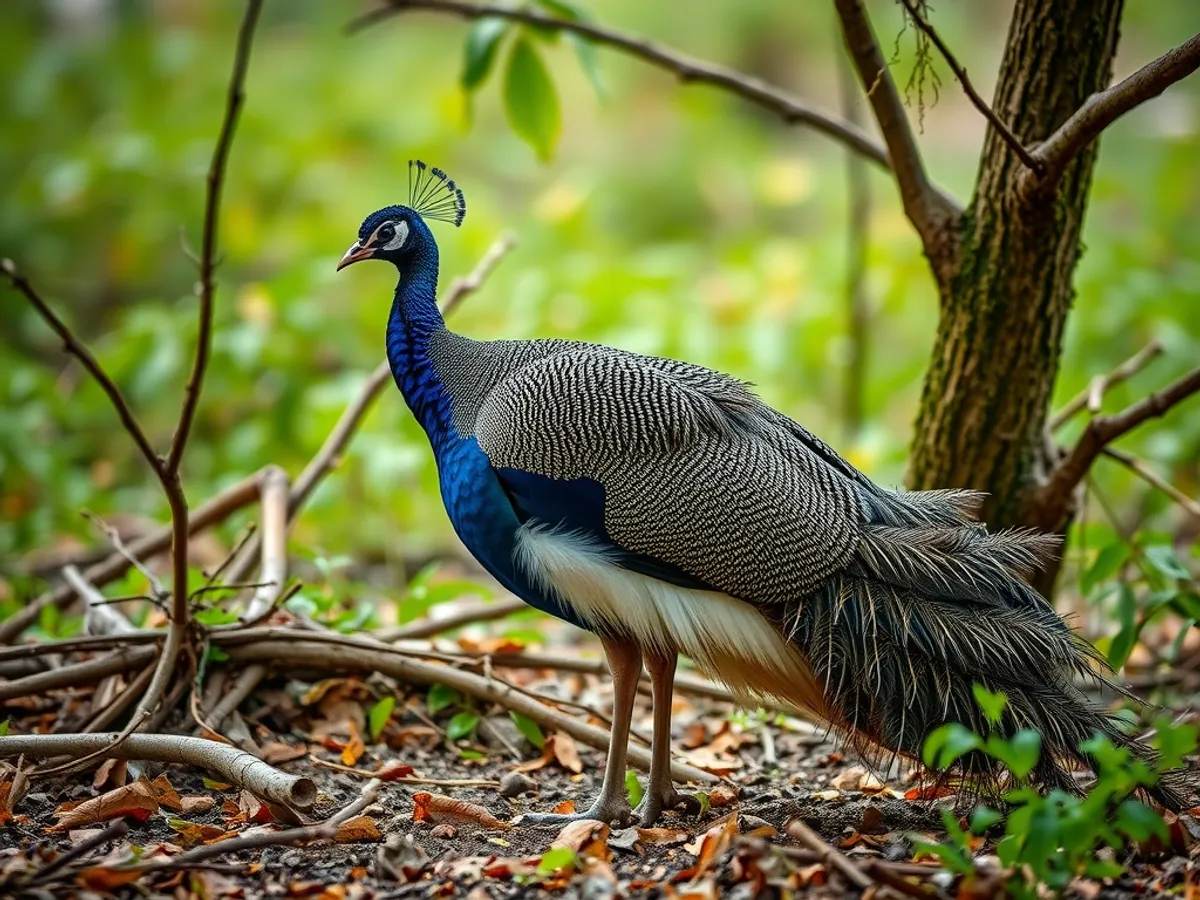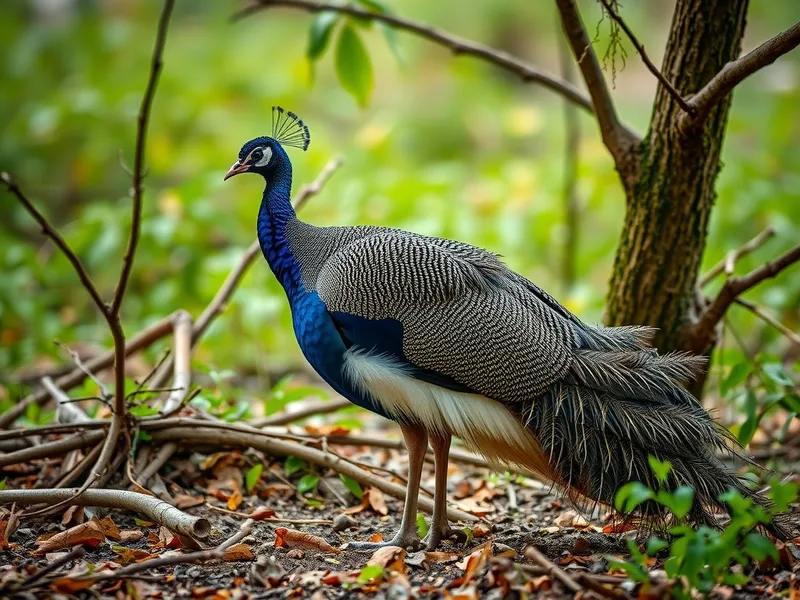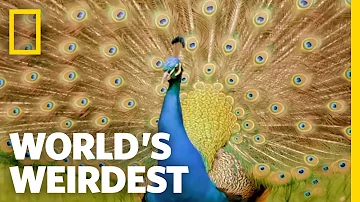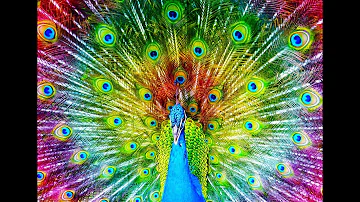
Indian Peafowl
Pavo cristatus

Meet the Indian Peafowl
The Indian Peafowl, also known as the blue peafowl, is a large and striking bird native to the Indian subcontinent. Males are renowned for their iridescent blue and green plumage and extravagant train of elongated upper tail covert feathers, which they fan out in a shimmering display during courtship. Females, called peahens, are more subdued in coloration, with brown and green feathers for better camouflage. Indian Peafowl are social birds, often found in small groups, and are highly adaptable to various habitats. They are the national bird of India and are celebrated in art, folklore, and cultural traditions.
Classification
Bird
Habitat
Open forests, farmlands, and scrublands near water sources
Diet
Omnivore
Lifespan
15-20 years in the wild
Conservation
Least Concern
Weight
2.7-6 kg
📖Fascinating Facts
National Bird
The Indian Peafowl is the national bird of India, symbolizing grace, beauty, and pride.
Colorful Plumage
Peacocks are famous for their dazzling iridescent feathers, which reflect light to produce vibrant blue and green hues.
Vocal Calls
Peafowl are very vocal, especially during the monsoon and breeding seasons when their calls can be heard from miles away.
📋Detailed Description
The Indian Peafowl (Pavo cristatus) is a large, sexually dimorphic bird, with males (peacocks) reaching up to 2.3 meters in length, including their elaborate train, and weighing 4–6 kg, while females (peahens) are smaller, typically 0.86–1.1 meters long and weighing 2.75–4 kg. The male’s train, composed of more than 200 elongated upper tail coverts adorned with iridescent eyespots (ocelli), is used in dramatic courtship displays. The body plumage of males is a vibrant metallic blue, while the wings are barred black and brown; females are mostly brown and dull green, providing camouflage. Both sexes have a fan-shaped crest on the head, but the male’s is more pronounced. Indian Peafowl possess strong legs adapted for ground foraging and short, rounded wings for brief, powerful flights, usually to escape predators or reach roosting sites. Their vocalizations are loud and varied, serving both territorial and alarm functions. These birds are primarily terrestrial, spending much of their day foraging on the ground but roosting in tall trees at night. They are highly adaptable, thriving in a range of habitats from dry deciduous forests to cultivated lands and even urban parks. Socially, peafowl are gregarious outside the breeding season, forming loose flocks, but males become territorial during courtship. Their diet is omnivorous, consisting of seeds, grains, insects, small reptiles, and even small mammals. The Indian Peafowl’s striking appearance and complex behaviors have made it a subject of extensive scientific study and cultural reverence.
💡 Did you know?
The eye-like spots on a peacock's tail, called ocelli, are used to attract females and can number over 100 on a single train.
🔬Research & Sources
Wikipedia Summary
The Indian peafowl, also known as the common peafowl, or blue peafowl, is a peafowl species native to the Indian subcontinent. While it originated in the Indian subcontinent, it has since been introduced to many other parts of the world. Male peafowl are referred to as peacocks, and female peafowl are referred to as peahens, although both sexes are often referred to colloquially as a "peacock".
Last Modified: 6/3/2025
🎭Behavior & Social Structure
Indian Peafowl are diurnal, spending daylight hours foraging in groups known as parties, which may consist of several females and juveniles, while adult males are often solitary or loosely associated outside the breeding season. Foraging is primarily on the ground, where they scratch leaf litter for seeds, berries, insects, and small vertebrates, but they will also consume cultivated crops. They are vigilant, with sentinels often keeping watch for predators such as leopards, jungle cats, and large birds of prey. At dusk, peafowl fly up to high tree branches to roost communally, which helps reduce predation risk. Males are highly territorial during the breeding season, defending display sites called leks, where they perform elaborate train-fanning displays accompanied by rattling and booming calls to attract females. Social interactions are complex, with dominance hierarchies among both sexes, and frequent vocalizations used for communication, especially during the monsoon breeding season.
👶Reproduction & Life Cycle
Indian Peafowl are polygynous, with one male mating with multiple females. The breeding season typically coincides with the onset of the southwest monsoon (June–September in India), when food is abundant. Males establish and defend display territories, where they perform courtship displays to attract females. After mating, the female lays 3–8 buff-colored eggs in a shallow ground scrape, often hidden in dense vegetation. Incubation is performed solely by the female and lasts about 28–30 days. Chicks are precocial, leaving the nest within hours of hatching and following the mother, who provides protection and guidance but does not feed them directly. Fledging occurs at 2–3 months, but juveniles may remain with the mother for several months. Males reach sexual maturity at around 3 years, females at 2 years.
🛡️Adaptations & Survival
Indian Peafowl have evolved several adaptations for survival. Their cryptic coloration and strong legs allow them to evade predators by running swiftly and hiding in dense cover. The male’s train, though seemingly cumbersome, is an example of sexual selection: studies suggest that the size and number of eyespots are indicators of genetic fitness, influencing female choice. Both sexes possess a loud, far-carrying call that serves as an alarm signal, warning other animals of predators. Their omnivorous diet and ability to exploit a wide range of habitats, including human-modified landscapes, contribute to their ecological success. Roosting in tall trees at night provides safety from ground predators. The peafowl’s acute vision and hearing further enhance their ability to detect threats.
🎨Cultural Significance
The Indian Peafowl is the national bird of India and holds deep symbolic meaning in Hinduism, Buddhism, and other South Asian traditions. It is associated with deities such as Kartikeya and Saraswati, and its feathers are considered sacred and used in religious rituals. The peacock is a symbol of beauty, pride, and immortality in Indian art, literature, and folklore. Its image appears in ancient sculptures, temple carvings, and Mughal paintings. Peafowl feathers have been traditionally used for ornamentation, fly-whisks, and in Ayurvedic medicine. The bird’s presence in rural landscapes is often considered auspicious, and its calls are said to herald the arrival of rain.
🔬Recent Research & Discoveries
Recent research has focused on the biomechanics and evolutionary significance of the peacock’s train, with studies revealing that the train’s iridescence is due to microscopic photonic structures rather than pigments. Behavioral ecology studies have examined lekking behavior, mate choice, and the role of vocalizations in social communication. Genetic studies have explored the domestication and spread of peafowl, as well as their phylogenetic relationships within the Phasianidae family. Conservation research monitors population trends and the effects of habitat fragmentation. Ongoing studies are investigating the impacts of urbanization and climate change on peafowl distribution and behavior.
🎥Wildlife Videos

Wait for it… 🦚 #Peacock #India
Welcome to BBC EARTH! The world is an amazing place full of stories, beauty and natural wonder. Here you'll find 50 years worth ...
BBC Earth

Peacock Courtship | World's Weirdest
#NatGeoWILD #WorldsWeirdest #Peacocks About World's Weirdest: A buffalo with three eyes, an exterminator who eats his day's ...
Nat Geo Animals

Wildlife Documentary - When The Peacocks Sing: A Prequel to the Monsoons | Pocket Films
Set broadly in the state of Rajasthan (India) - amidst semi-arid jungles and cultural and architectural heritage, the film showcases ...
Pocket Films

Sarang - The Peacock , a documentary on the National Bird of India
peacockdocumentary #pheasant #raagsarang #natureandmusic 00:00 Introduction to pheasants of the world 01:41 Sarang the ...
IndianWildlifeClub - Nature Lovers Who Care

Facts you didn't know! Documentary About the Peacocks. Planet Of Animals - 4K ULTRA HD
Peacocks are magnificent and fascinating birds that are known for their beautiful and colourful feathers. They are native to South ...
Planet Of Animals
![The Peacock - Nature's Living Masterpieces! – [Hindi] – Infinity Stream](https://i.ytimg.com/vi/ldLnwc3kfvk/hq720.jpg?sqp=-oaymwEcCOgCEMoBSFXyq4qpAw4IARUAAIhCGAFwAcABBg==&rs=AOn4CLAnfYe0y6jL20hsRIigfRhcoYvXqg)
The Peacock - Nature's Living Masterpieces! – [Hindi] – Infinity Stream
PeacockDocumentary #NatureDocumentary #Education Watch More Documentary: https://bit.ly/3WwCGe3 Although you must ...
Infinity Stream
🌍Habitat Information
The Indian Peafowl typically inhabits Open forests, farmlands, and scrublands near water sources environments. Indian Peafowls have adapted to their environments with specialized features and behaviors.
Primary Habitat:
Open forests, farmlands, and scrublands near water sources
More detailed habitat information will be available soon.
🛡️Conservation Status
The Indian Peafowl is currently classified as Least Concern. Conservation efforts are crucial for preserving this species for future generations.
Common Threats:
- 🏠Habitat loss and fragmentation
- 🌡️Climate change impacts
- 🎯Hunting and poaching
- 🏭Human-wildlife conflict
⚠️Threats & Conservation Challenges
Despite being classified as Least Concern by the IUCN, Indian Peafowl face localized threats including habitat loss due to agricultural expansion, urbanization, and deforestation. In some regions, they are hunted for their meat and feathers, or persecuted as crop pests. Predation by feral dogs and natural predators, as well as egg and chick predation by mongooses and snakes, can impact local populations. Pesticide use in agricultural areas may reduce food availability and cause poisoning. However, their adaptability to human-altered environments and cultural protection in many parts of India have helped maintain stable populations. In some introduced areas, peafowl may become invasive, impacting local ecosystems.
🔬Scientific Classification
Scientific Name
Pavo cristatus
Classification Hierarchy
🔍 About Taxonomic Classification
Taxonomic classification is a hierarchical system used by scientists to classify and organize living organisms based on shared characteristics and evolutionary relationships.
The system moves from broad categories (Kingdom) to increasingly specific ones, with each animal's scientific name typically consisting of its Genus and species.
📝Community Notes
Share your observations and insights about the Indian Peafowl with our community of wildlife enthusiasts.
Join Our Community
Sign in to share your observations and connect with fellow wildlife enthusiasts.
Sign In to ContributeNo community notes yet
Be the first to share your observations about the Indian Peafowl!
Explore Indian Peafowl
Select a tab above to learn more about this amazing animal.
📸Photo Gallery
No photos available for this animal yet.
🌟Discover More Wildlife
Continue your journey of discovery with more fascinating animals from our database
